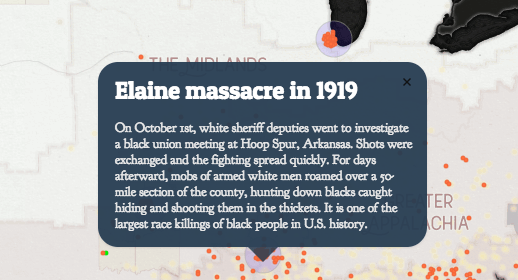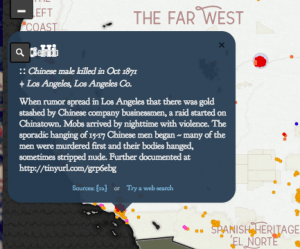This lesson is designed to give students an opportunity to use perspective taking to write journal entries as an African American soldier who has returned to America after fighting in WWI and is experiencing all the racial unrest that occurred in the years afterwards. The lesson explores the Harlem Hellfighters, the Red Summer, W.E.B Dubois writings, the Memorandum for the Chief of Staff regarding Employment of Negro Man Power in War, and more.
Harlem Hellfighters Interactive Video Lesson
This video lesson would be used in a US History class to introduce a lesson on race relations in the United States during WWI. I would have students watch this video and answer the questions as homework to be able to come into class ready to discuss what they learned from the video, and kick off a broader lesson on African Americans and other minorities and their involvement in WWI. This is just a short assignment to start the lesson, but I imagine the full lesson would be supported by other readings and activities regarding racism and the effect stories like this had on the civil rights movement in the coming years.
Teaching with Data
For my lesson, I would use the map of mob violence. Students would be instructed to go to the site and use it as a jumping point to research different acts of violence. Students would be separated into small groups, and they would work together to research the violence that occurred in different regions of America. Regions would be separated into the regions this map creates: “Left Coast”, “Far West”, “Yankee North”, “Spanish Heritage El Norte”, “The Midlands”, “Greater Appalachia” and “The Deep South”. Students would use this map as a jumping point to research the mob violence that has occurred in this region over the years, and how it changed over time. For example, the west coast had quite a few Native American victims of mob violence during the early years of this map and eventually has more Chinese victims. Each plot point can be clicked on and the story behind the violence can be expanded (see screenshots below). Many of the plot points link to sources, which would allow students to find more details on the killing, and be able to present a fuller story about why these incidents of mob violence occurred.
Students would research a few of the incidents to find greater detail, and present their findings to the class. We would use their findings to discuss the history of mob violence in our country, as well as draw parallels to issues we see today. This could be used in conjunction with a unit about progressive reforms, civil rights, or something along those lines.
Small Notes, Big Connections
For the last few class sessions, our classes were learning about the atrocities of the trenches of WWI. After someone asked the question, “Why would anyone choose to enter this war?” I used the post-it note discussion techniques and asked students to think of one or two reasons why a person would willfully enter into WWI, and then put it on the board. After the students had placed their answers on the board, I asked them to categorize them into over-arching categories and broke into a group discussion about if the reasons for entering WWI were similar to why people join the military or military conflicts today.
I learned that students are more likely to participate in a discussion if they can do so by writing something down, instead of talking out loud. Often these responses are a lot more complex than the answers I’ve heard in large-group discussions. Additionally, my students, even if they’ve already written their answer down, do not like saying it out loud or participating in a larger discussion. I’ve found that the best way to avoid this silence is to warn them that I will be randomly selecting them to participate by using the “popsicle stick” method. Using this method, I was able to get them to make more connections and think about the ways they chose to categorize the post-it notes more in-depth. I still need to figure out the best way to get the students to really talk to each other instead of just talking to me, but hopefully that will come as we continue to use more strategies for discussion.






